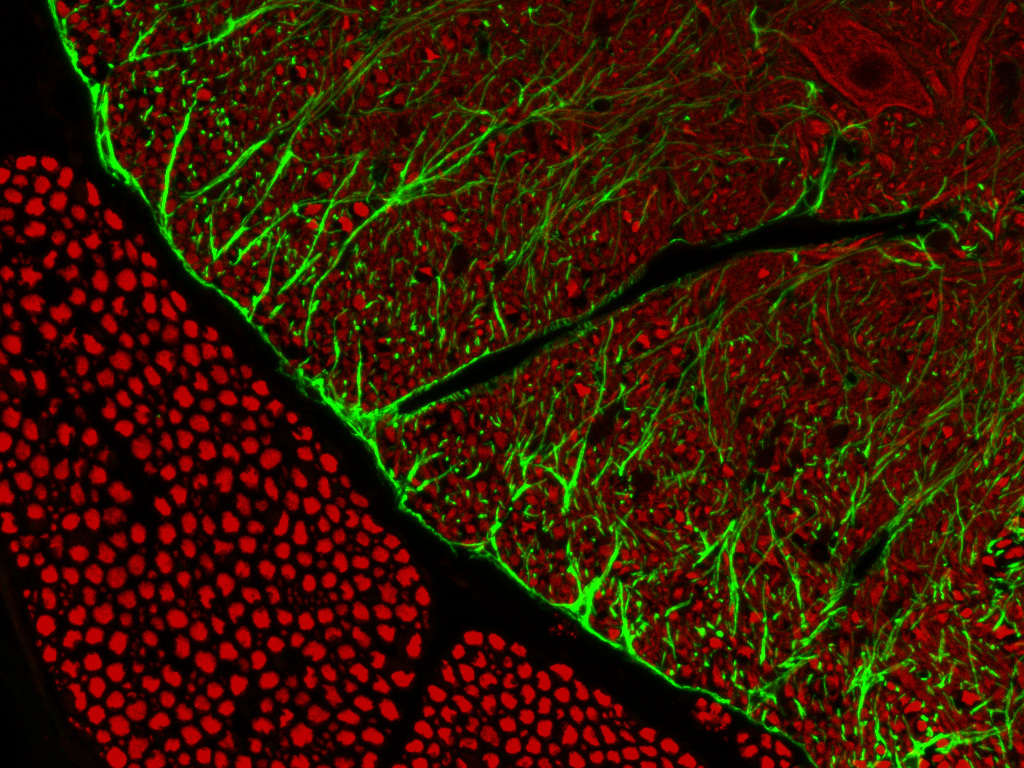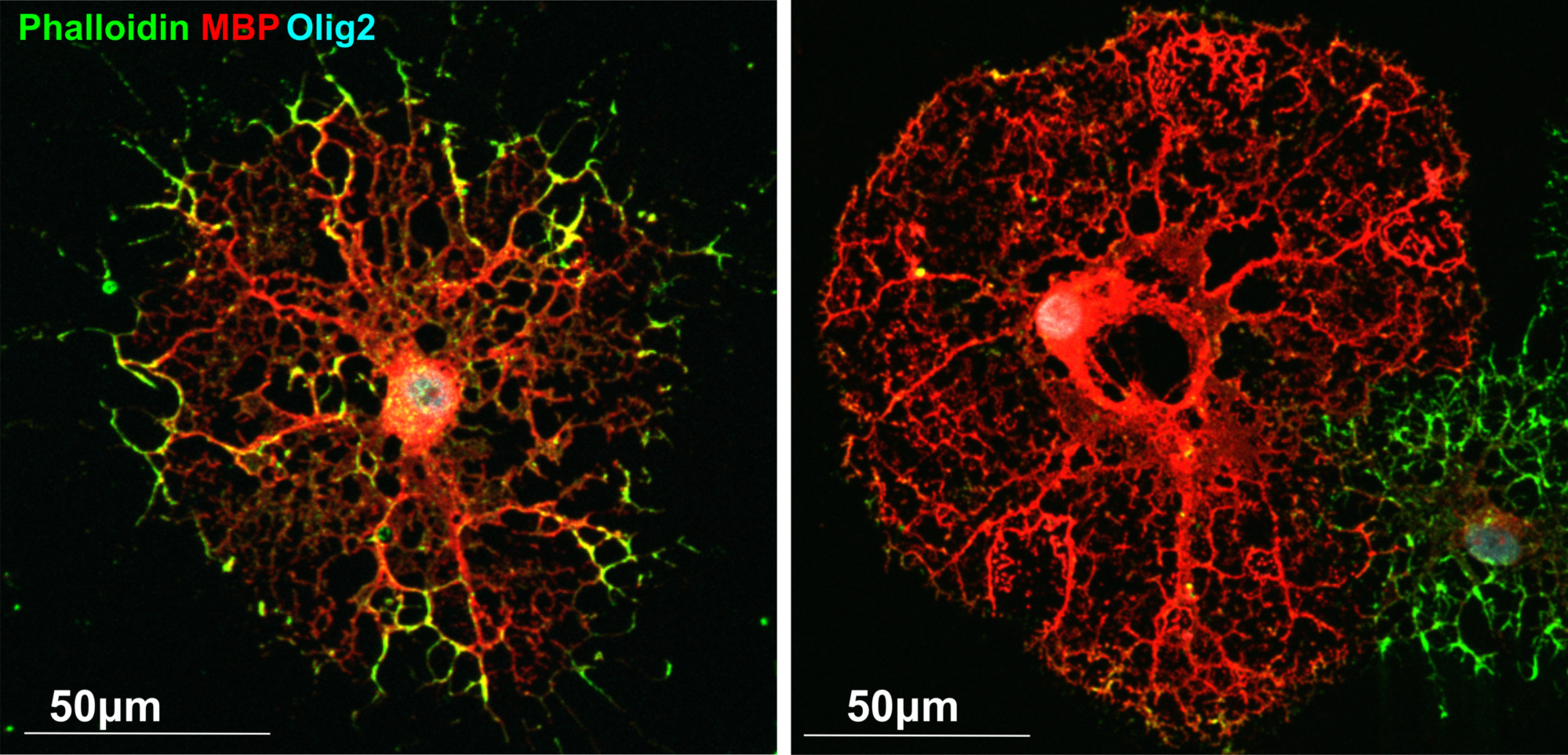Cellular differentiation in development
The adult nervous system is comprised of a wide array of specialized neurons as well as oligodendrocytes, astrocytes and microglia. The production of these different cell types is tightly orchestrated both temporally and spatially to enable the construction of functional neural circuits. We have discovered that a small family of proteins, the six-transmembrane GDEs, plays important roles in the generation of different subtypes of neurons in the developing spinal cord and cortex, as well as in the proliferation and maturation of oligodendroglia.
There are three members of this family, GDE2, GDE3 and GDE6, and they all contain an external enzymatic domain that is homologous to bacterial glycerophosphodiester phosphodiesterases (GDPD). We discovered that GDE2, GDE3 and GDE6 are the only known enzymes in vertebrates that work on the cell surface to cleave the glycosylphosphatidylinositol (GPI)-anchor that tethers some proteins to the plasma membrane. Cleavage of the GPI-anchor can activate or inhibit GPI-anchored protein function depending on cellular context. We focus on GDE2 and GDE3 as they are expressed in mammalian systems. GDE2 is primarily expressed in neurons and subsets of terminally differentiated oligodendrocytes while GDE3 is expressed in oligodendrocyte precursor cells and astrocytes.
We have found that GDE2 is a key regulator of neurogenesis in the spinal cord and brain. Find out more about GDE2 function in neuronal differentiation: PDF
Ongoing projects are examining roles for GDE2 and GDE3 in oligodendrocyte development. Methodologies used in our studies include biochemistry, cell and molecular biology, imaging, mouse genetics, next-generation sequencing, proteomics, cell lines and primary neuronal and oligodendrocyte cultures.



